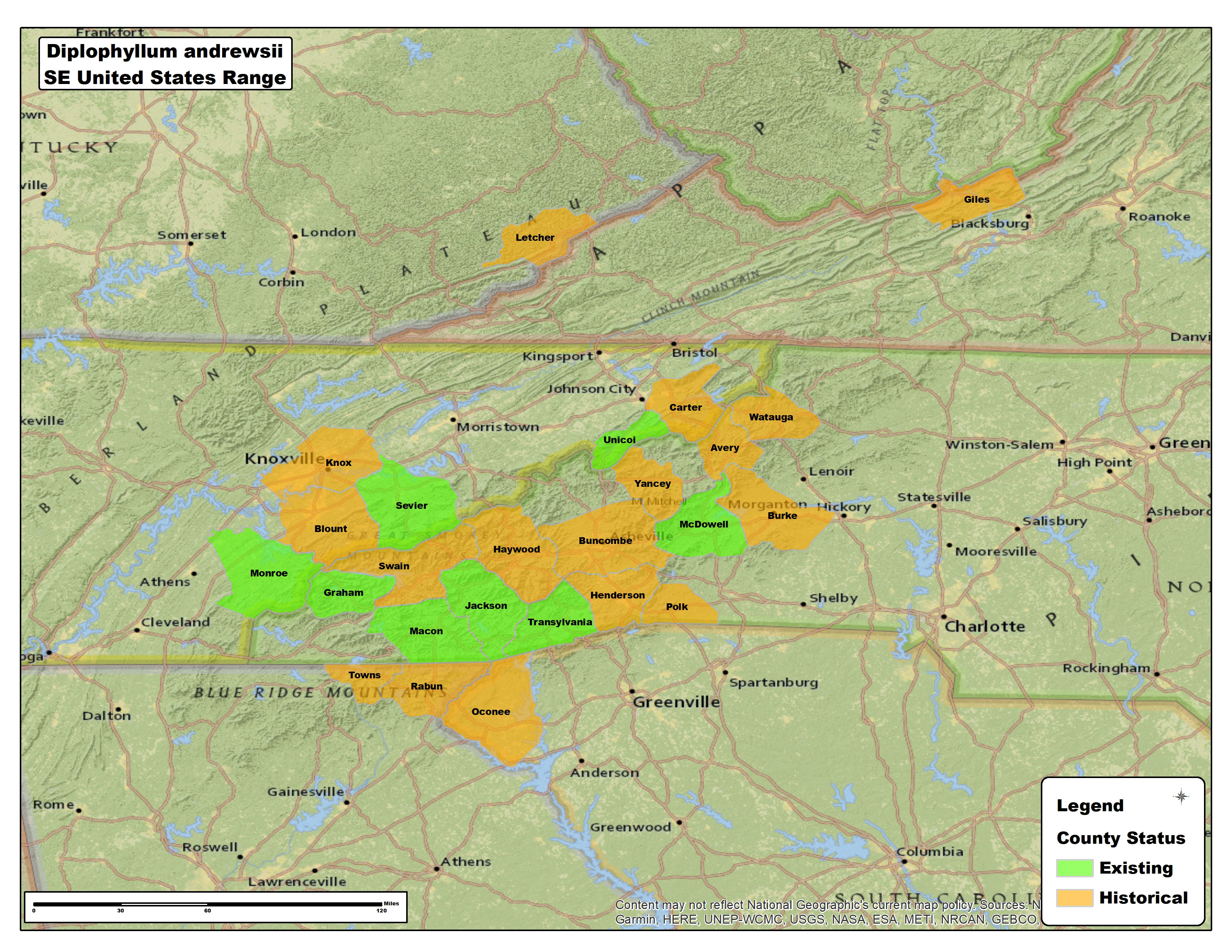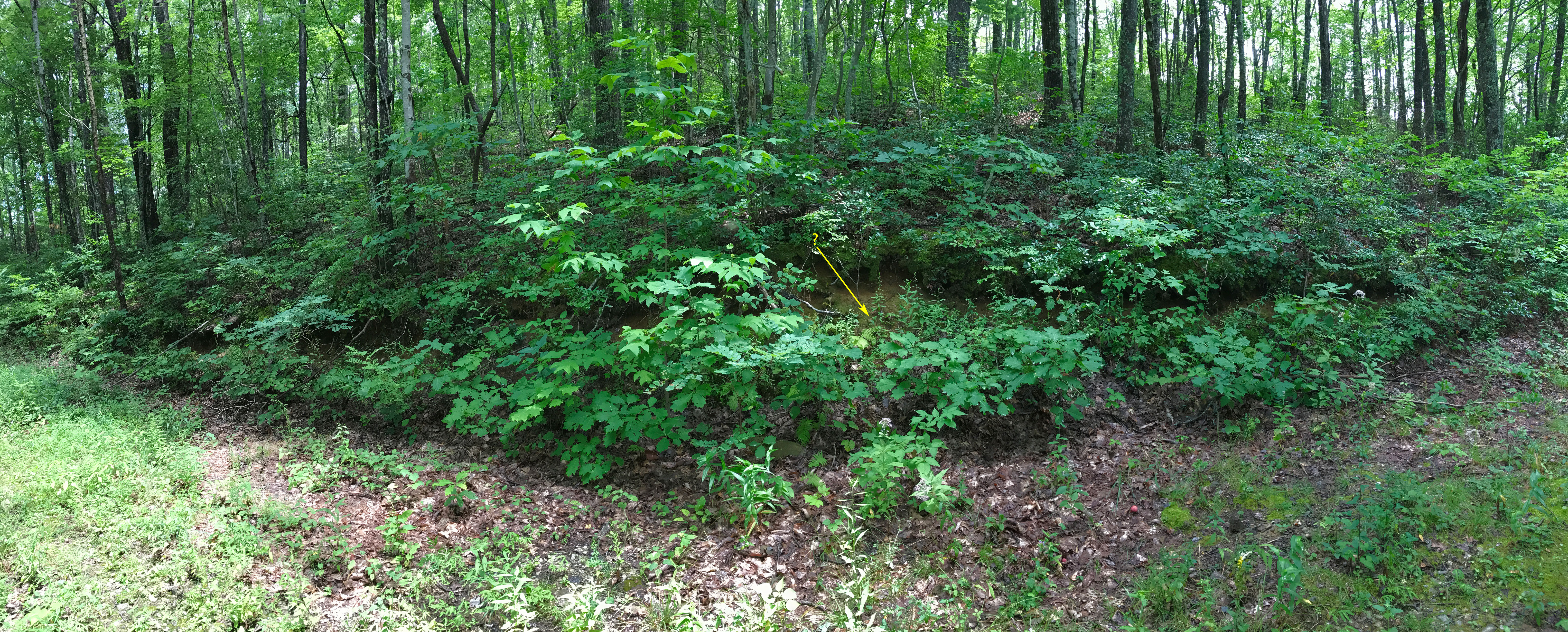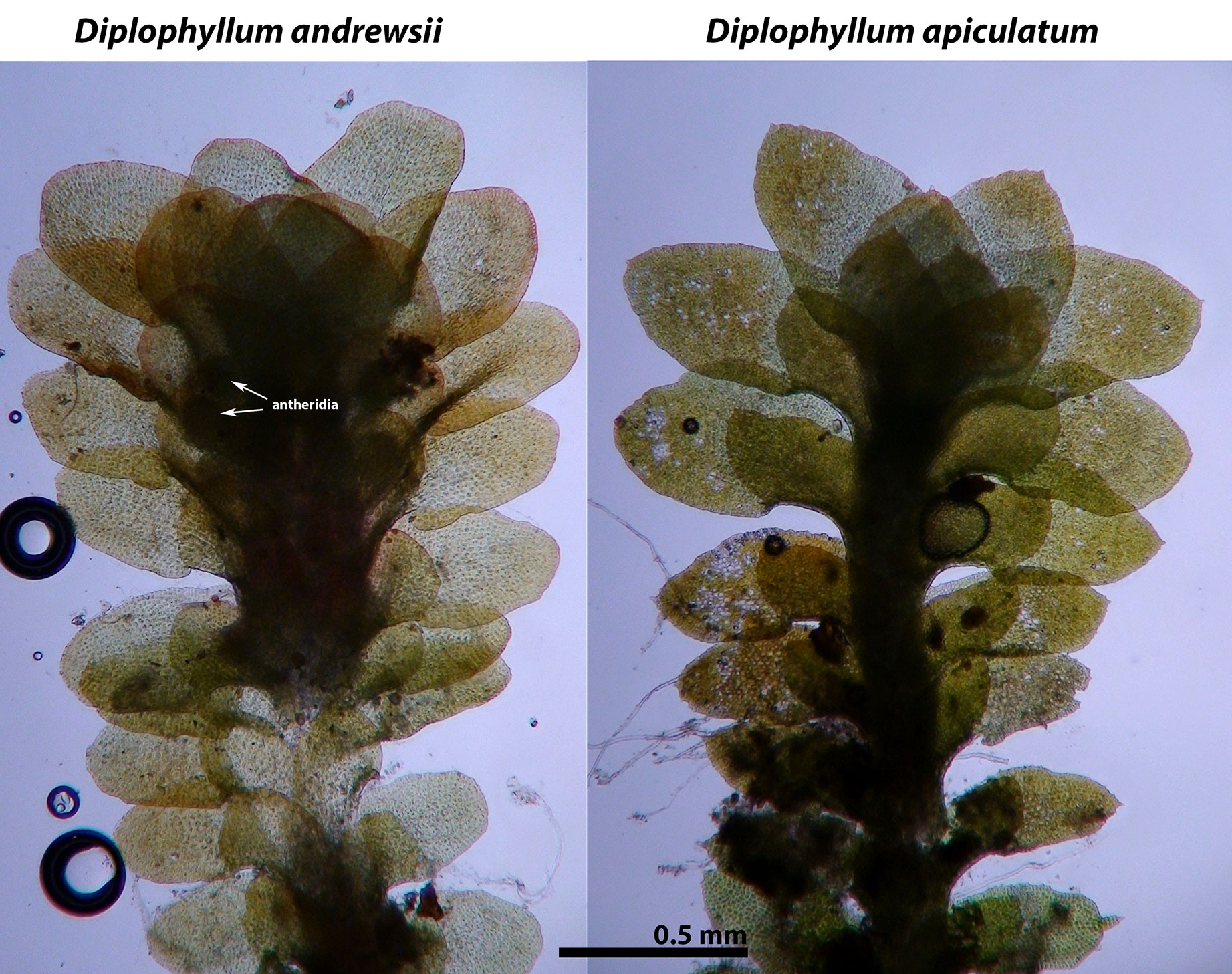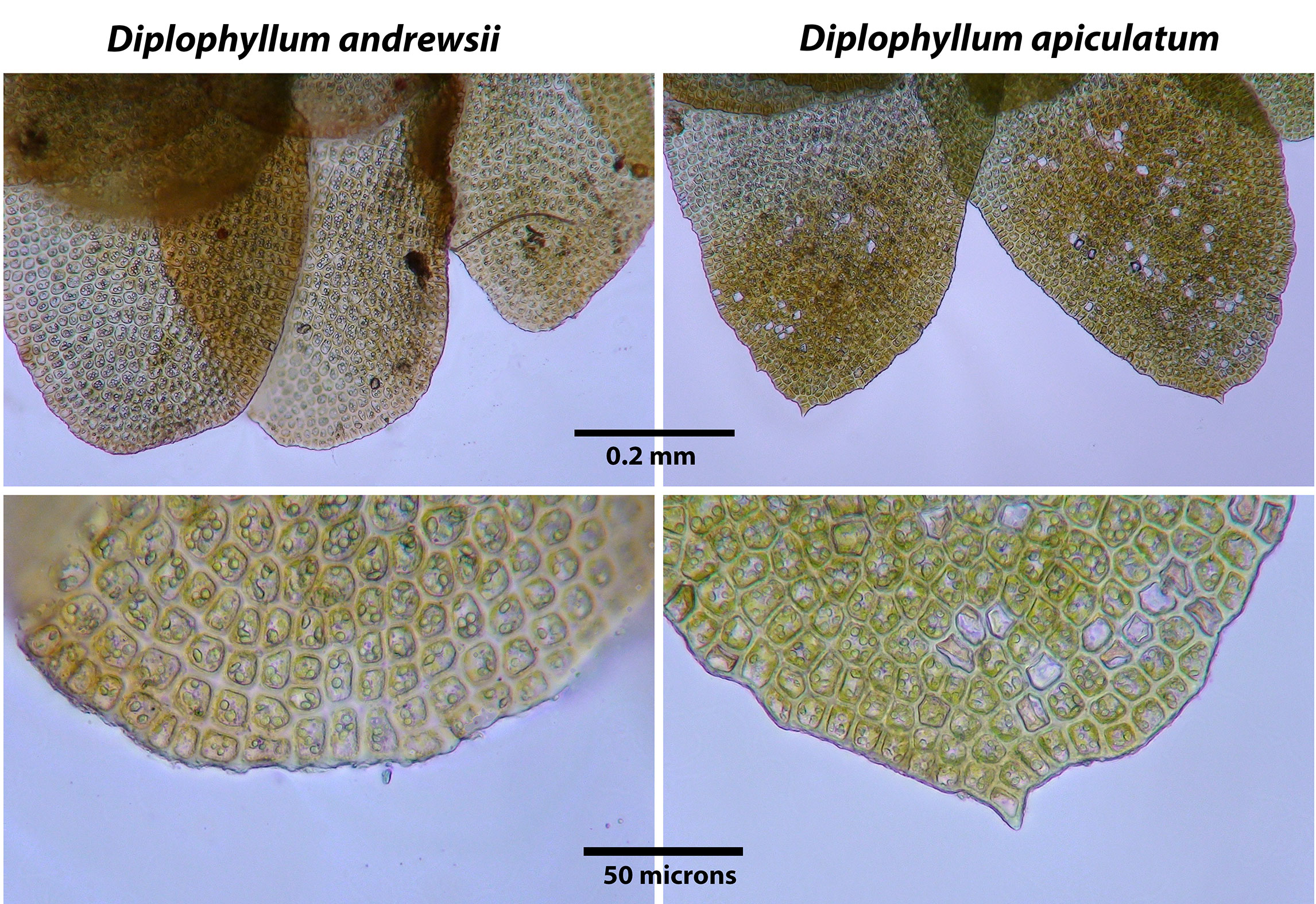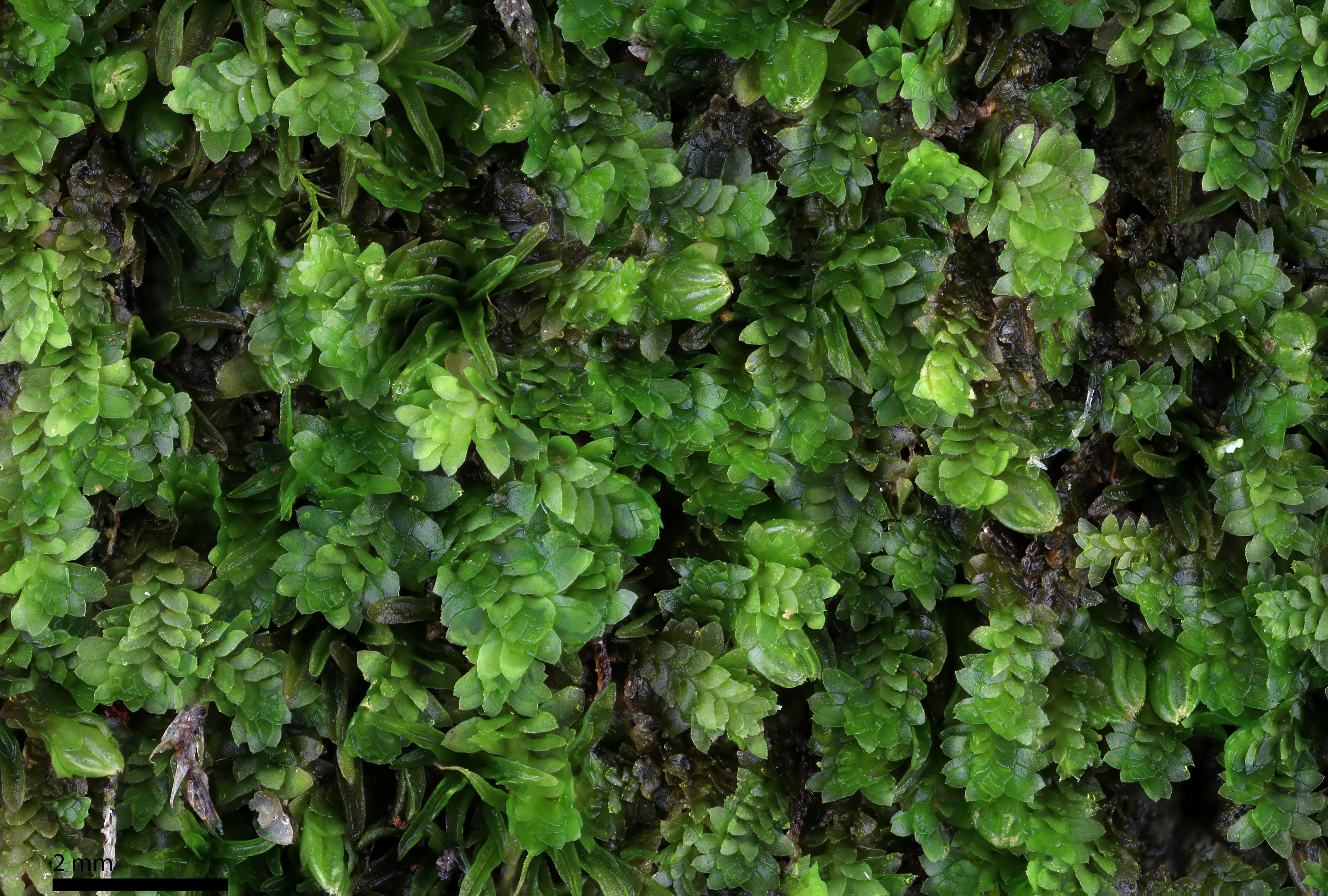Diplophyllum andrewsii A. Evans
Family: Scapaniaceae
Synonyms
none
NatureServe Conservation Status
G3
Distribution
North America. U.S.A. (Georgia, Kentucky, Massachusetts, North Carolina, South Carolina, Virginia). Asia. (Japan, Korea, Taiwan, Russia). Bakalin and Vilnet 2018; Miller and Robinson 2015; Schuster 1974.
Habitat
Hardwood forests including acidic cove and northern hardwood forests; found once in a Rhododendron bald and on bank of a lake. Invading mineral soil on road banks and stream banks, and along rock bluffs; in areas of high humidity, in shade or exposed to sun during part of the day. Once found on the campus of Western North Carolina on a bank cut-out behind a dumpster. Apparently unable to remain in place over many years as successional changes occur. Associated bryophytes include Calypogeia spp., Diplophyllum apiculatum, D. obtusatum, Ditrichum, Lophozia bicrenata, Pogonatum pennsilvanicum, and Solenostoma gracillimum. Elevations 900 - 5900 ft., perhaps more common at the mid to upper elevations. Apparently absent from Fraser fir - red spruce forests.
Brief Description and Tips for Identification
Plants yellow-green to brown, forming thin mats adherent to soil or intermingled with other bryophytes. Shoots 1 - 1.5 mm wide, leaves complicate-bilobed, the smaller lobe is dorsal to the larger ventral lobe. Dorsal lobe often erect. Leaf margins entire; apices of leaf lobes broadly rounded. Underleaves absent.
Monoicous. Always fertile. Gemmae rare.
Diplophyllum andrewsii differs from all other regional species of Diplophyllum in that the leaf margins are entire. D. apiculatum, D. obtusatum, and D. taxifolium leaf margins bear small teeth.
As a collector it can be difficult to predict where D. andrewsii will turn up. Dirt banks are exceeding common and so often one finds D. apiculatum to the point of monotony. Distinguishing D. andrewsii apart from the very common D. apiculatum is possible in the field but not always reliable given the likelyhood of misinterpreting leaf margin characteristics. That the plants are small and may occur comingled with other bryophytes is also problematic.
Salient Features
- Leaf margins entire
- Dorsal lobe often erect, when wet or dry
References
Bakalin, V. and Vilnet, A. 2018. A review of the genus Diplophyllum (Marchantiophyta) in North and East Asia with the description of a new species (D. sibiricum) based on integrative taxonomy. Plant Systematics and Evolution, 304(10), 1269-1287.
Evans, A. W. 1922. Notes on North American hepaticae. IX. The Bryologist, 25(2), 25-33
Miller, N. G., and Robinson, S. C. 2015. Bryophytes of Martha's Vineyard and Nomans Land, Massachusetts, USA. Rhodora, 117(972), 431-453.
Schuster, R.M. 1974. The Hepaticae and Anthocerotae of North America East of the Hundredth Meridian. Volume III. Columbia University Press, New York
Habitat
Habit
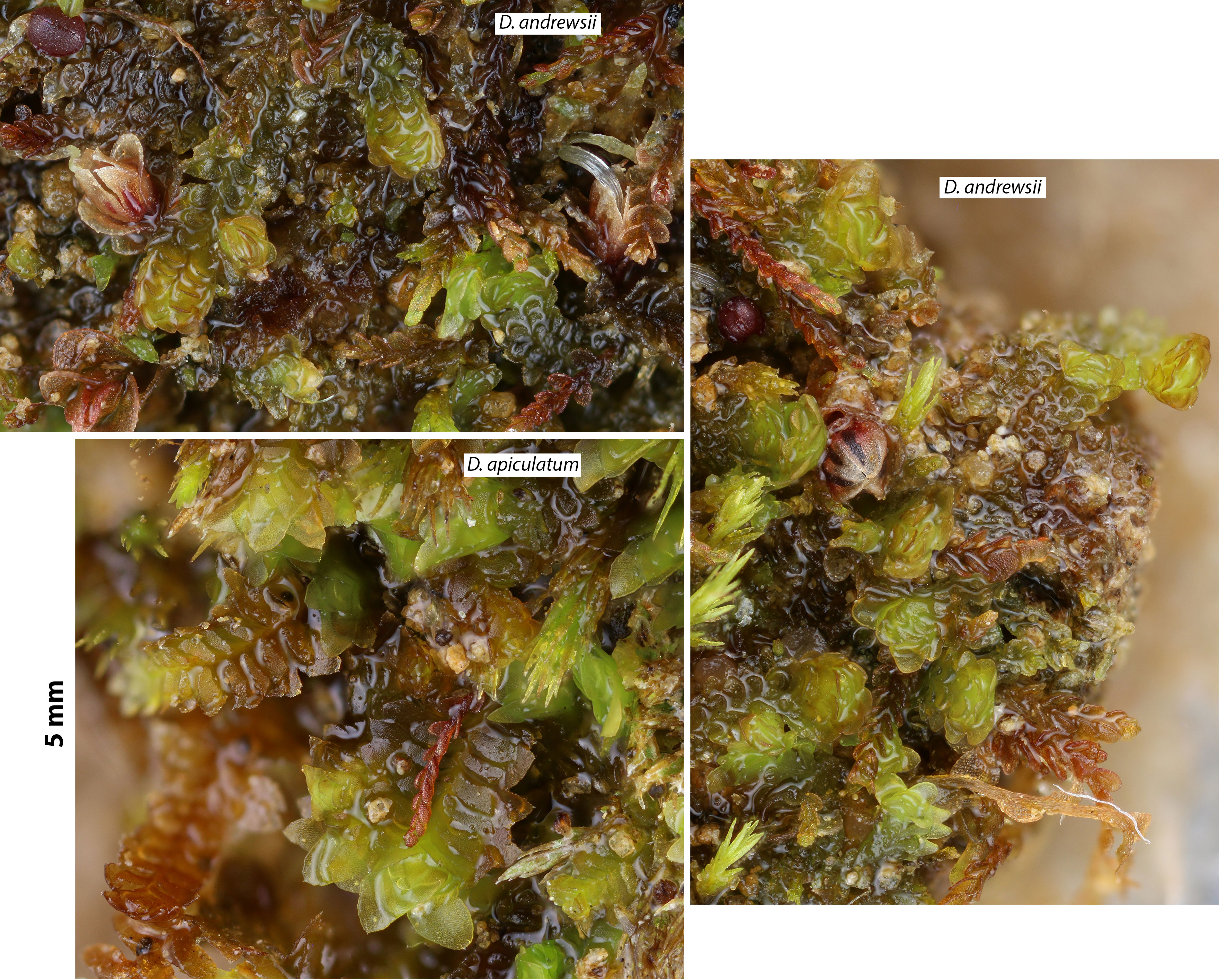
Diplophyllum andrewsii
Occurring with the reddish colored Jungermannia gracillima and with Diplophyllum apiculatum. The moss is cf. Ditrichum. Intermingled species within small patches over disturbed soil are commonly encountered and challenge the observer. Notice the apical tooth on the lobes of D. apiculatum that are never found on D. andrewsii. In the upper left panel, notice the dorsal lobe, very broadly rounded and turning upwards, erect, a distinguishing feature of D. andrewsii.
